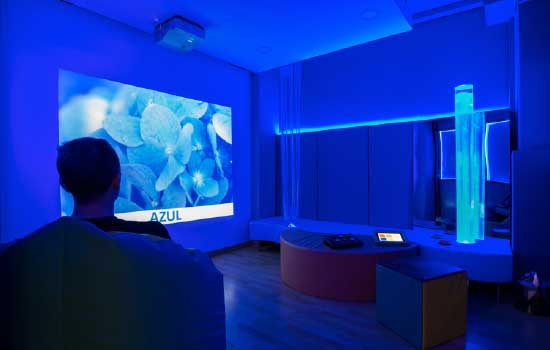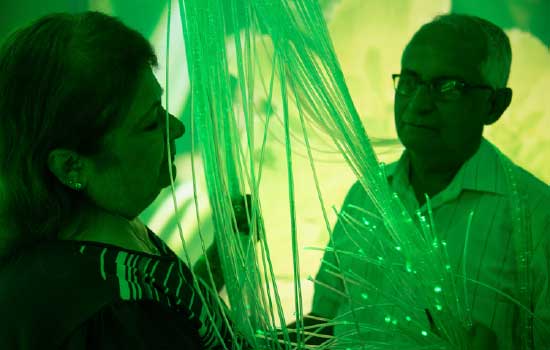Creating specific therapeutic environments, such as multisensory rooms, has proven to be a valuable tool for improving people’s quality of life. These rooms, designed to provide safe and controlled sensory stimuli, are a great ally for individuals affected by neurodegenerative diseases like Alzheimer’s and Parkinson’s, as well as for their families and the professionals who support them.
Therapeutic Benefits of Multisensory Rooms
Neurodegenerative diseases impact cognitive, motor, and emotional functions in older adults. These conditions not only affect daily life but also pose significant challenges for caregivers and families. Having access to a multisensory room can enhance the quality of life for everyone involved.
From the perspective of an occupational therapist, multisensory rooms offer a range of benefits that can help mitigate the effects of neurodegenerative diseases. Some of them are:
- Cognitive Stimulation: Multisensory experiences activate different areas of the brain. By incorporating light, sound, and textures, patients can recall and associate information, helping to maintain cognitive function. Imagine a room equipped with a bubble tube, a fan, and a bubble machine. With just the press of a button, all these elements activate simultaneously, making you feel as if you’re underwater.

Multisensory rooms allow for the creation of safe environments with controlled stimuli.
- Reduction of Anxiety and Agitation: The calming atmosphere of multisensory rooms can reduce anxiety and agitation, which are common symptoms in individuals with neurodegenerative diseases. Features such as soft lighting, relaxing music, and aromatherapy create a safe and comforting environment, helping patients find calmness.
- Enhanced Communication and Social Interaction: Engaging in a multisensory environment can facilitate communication. Individuals feel more motivated to interact in a controlled setting, improving their ability to socialize and share experiences with others.

A Multisensory Room can facilitate interaction and communication.
- Sensory and Emotional Activation: Stimulating the senses through various activities can evoke memories and emotions, enhancing emotional well-being. This is particularly beneficial in advanced stages of diseases like Alzheimer’s. For example, projecting family photos or videos in the room can become a meaningful activity to stimulate the senses.
- Promoting Autonomy and Participation: Multisensory rooms allow each person to participate in activities at their own pace. This not only fosters autonomy but also gives them a sense of control over their environment.
The Importance of Multisensory Rooms
Our multisensory rooms are designed to provide unique and immersive experiences that enhance users’ quality of life. We can tailor each space to meet specific therapeutic goals and individual needs.

Multisensory rooms offer many benefits for managing neurodegenerative diseases.
Multisensory rooms are a powerful tool for managing neurodegenerative diseases. Their ability to stimulate the senses, reduce anxiety, and improve communication can significantly impact the quality of life for older adults.
Free Project Design
If you want to learn more about the benefits of Multisensory Environments or see how you could adapt it to your space, therapeutic goals, and users, you can send an email to hello@qinera.com.












